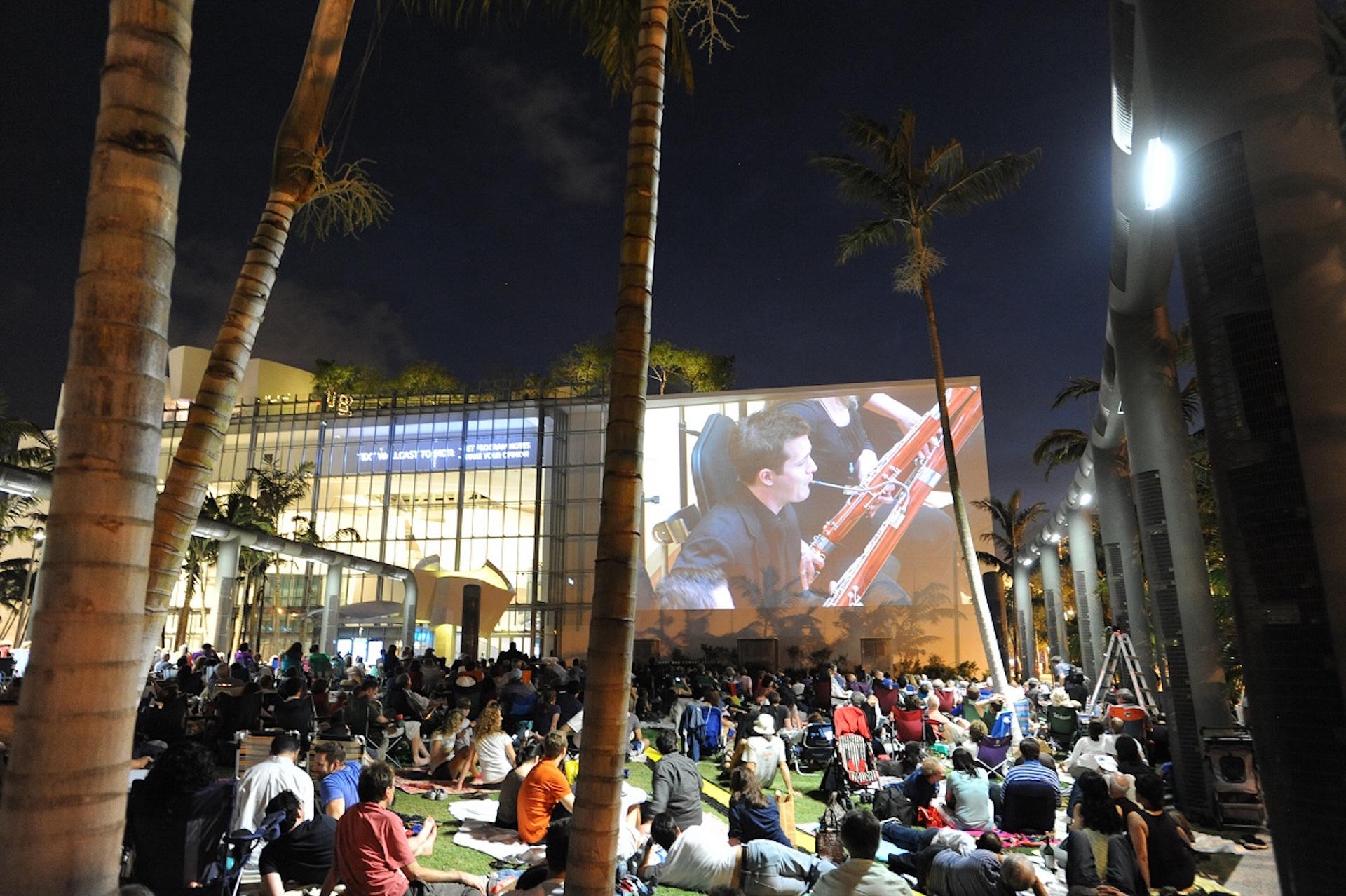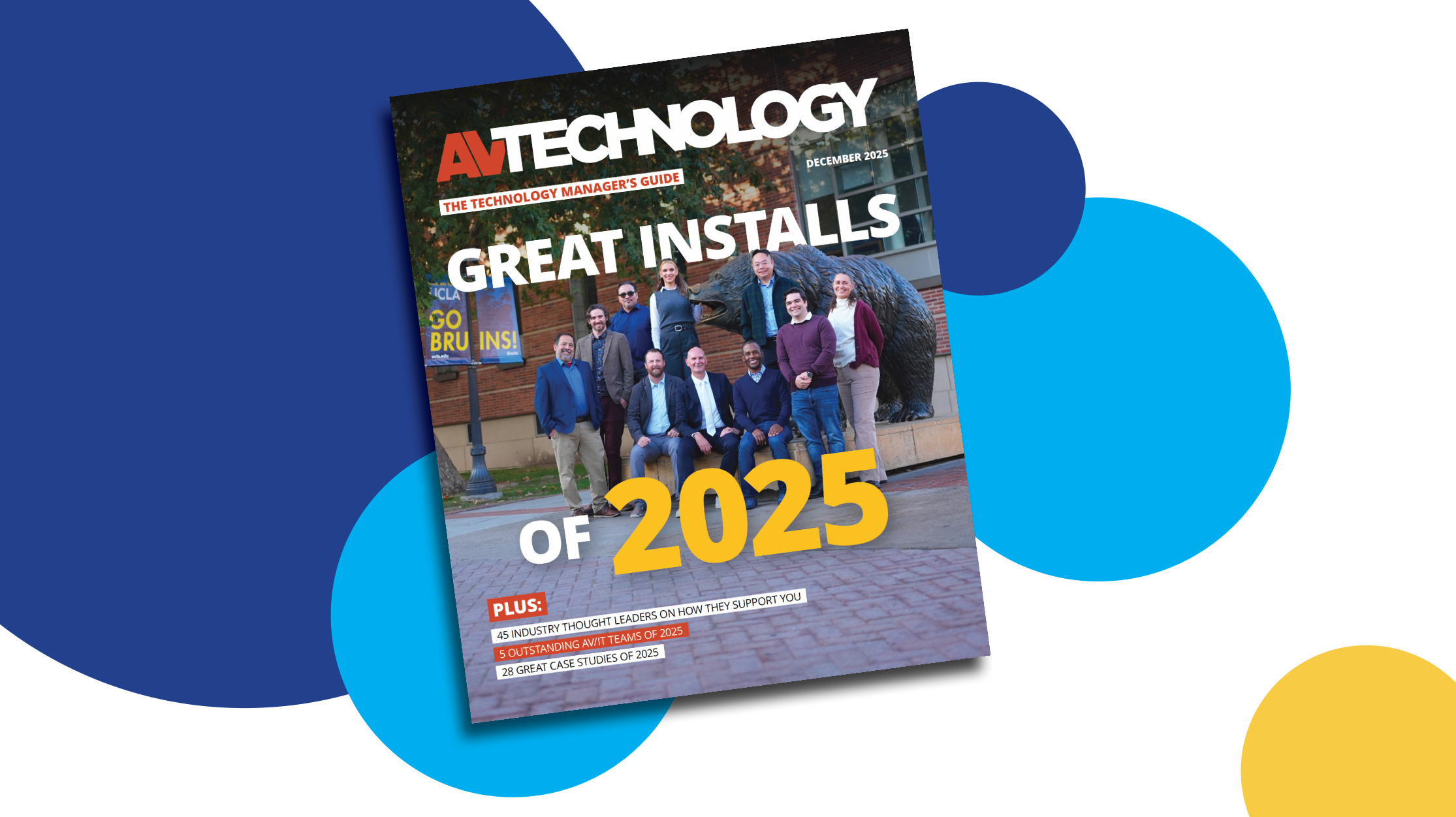12G Network Supports Immersive Concert Performances at New World Center
Miami’s New World Center concert hall upgraded its network infrastructure to 12G to allow the transmission of full-resolution 4K video over IP throughout the facility. The heart of the upgrade is FOR-A’s 12G HVS-6000 switcher.
Indiana Jones sprints through the crumbling temple as the heroic soundtrack heightens the tension and thrill of the moment. But the music isn’t coming from a recording, and you aren’t in a movie theater. You’re in a concert hall, with a full orchestra churning out every hair-raising note to the classic theme, in sync with scenes from the film projected on screens all around you. And leading the musicians at the center of the stage is none other than legendary composer John Williams himself.

This is just one of many extraordinary events that Miami’s New World Symphony (NWS) has hosted in recent years as the organization strives to bring classical music into the 21st century. Since moving into the New World Center, a $160 million, Frank Gehry-designed concert hall in South Beach in 2011, NWS has married cutting-edge AV over IP technology with the timeless art of symphonic music like no other organization in the world.
“New World believes that the future of music rides on being much more involved with the technology of today,” said Dan Slentz, chief video engineer at NWS. This extends outside of the space as well: the adjacent public SoundScape park allows visitors to experience the performances within the hall on a 100-by-75-foot projection wall, with a Meyer Sound Constellation audio system enveloping listeners in more than 160 discrete channels of audio.
“The audio that’s reproduced out in the park matches physically where you would be inside if you would be watching the orchestra,” Slentz said. “And visually, to tie all of that together, we overlapped three 35,000-lumen 4K Christie projectors for one big, bright, ultra-high-def image.” Called a WALLCAST, these performances draw huge crowds over the course of a nine-month concert schedule.
And, believe it or not, it’s all about to get even better: the facility is finishing up on a major tech upgrade that will bring all of the facility’s cameras and projection systems to native 4K60 with HDR, with signal transport based on 12G-SDI.
Upgrading to 4K
Slentz and his team began on the path to UHD four years ago, when it first installed its current Christie projection system. At the time, however, there was no system robust enough to distribute 4K throughout the facility at the quality they wanted. So, though the projection system for WALLCASTs uses 4K projectors, the image feeding them was 1080p30 from the facility’s Grass Valley Kayak switcher that was up-converted to UHD using an AJA Video Systems FS4 frame synchronizer and converter.
Embracing IT innovations for AV applications
A daily selection of features, industry news, and analysis for tech managers. Sign up below.
“The FS4 also took the HD and spit it out as Quad Link,” Slentz said. “For this upgrade, we really didn’t want to do Quad Link, and there were significant issues and challenges with trying to do 4K over IP, and there still are today. So, we were kind of waiting for the people to get together and come up with a really good 12G solution that didn’t compromise cutting all of your resources down to one quarter.”

Then, last summer, Slentz found out about a new 12G switcher and router from FOR-A. He and his team took a trip to Tokyo to visit the company and see it in action at Fuji TV. “That’s what brought us to, ‘OK, technology has finally caught up; it looks like we can do almost everything we want to do under 12G,’” he said.
1Gb vs. 10Gb Ethernet: Which is right for your AV network?
Slentz produced initial high-level designs and put the project out for bidding. Systems integrator Diversified responded and produced a nearly complete set of drawings that the NWS team used to make a direct purchase from FOR-A. “They were extremely great to work with, and a couple other companies had made recommendations, and we worked with those,” he said.
Ultimately, the team went with a different integrator for the installation: Enlighten Digital, a small firm based in Orlando, FL, which by the time of publication should be finished executing the upgrades.
A Dynamic System
The heart of the upgrade is the facility’s new HVS-6000 switcher from FOR-A, which supports 64 inputs and 48 outputs (it can also be configured to run at 80 in, 32 out). “We’re filling it up with three M/Es and really populating it heavily,” Slentz said. The team also settled on FOR-A’s multiviewer and 144-square router.

The upgrade process was a lengthy one, in part because the new distribution system required the wholesale replacement of the facility’s infrastructure. “Under 12G, the you don’t want any of the old 3G HD stuff near the 12G,” Slentz said. “You just want to dump it and do everything in 12G. So, we scrapped everything. We went from analog and AES to RAVENNA at the same time, so that’s a big part of the upgrade as well.”
The basics of AV over IP infrastructure
The NWS overhaul also extends to the video sources. Two years ago, they purchased a dozen Hitachi 4000 4K cameras, put lenses on them, and put a few of them on Telemetrics robotics for control. “Within the concert hall we have 13 Hitachi broadcast cameras in 4K,” Slentz said. “In this upgrade, we’re adding six more Panasonic PTZs, which are very small, so they can go on the stage and catch performers and sit near the instruments.”
They’re also adding another eight Panasonic PTZ cameras into the SunTrust Pavilion, which Slentz describes as a “medium-sized TV studio” on the building’s first floor. “One of the cool things about this HVS-6000 switcher is we are actually dropping a secondary switching panel in our control room on the first floor and tying everything together through our tech core, our central equipment room,” he said. “So, ultimately, we have the ability to run 30 4K cameras—and we will have 28 all wired and ready, and two we can move around. And we can switch them from either location.”
Installing AV over IP systems today affords future expansion possibilities
The overall 4K output can be fed not only to the outside projection system, but inside the concert hall as well, where 14 Christie Roadie HD30 projectors create an internal immersive viewing area surrounding the orchestra.
Next Measures
Technology continues to march onward, and since the installation of the current projection system in 2015, new and better options have emerged. “We’re looking at upgrading 16 projectors next summer to 4K laser, and that will bring us up to the absolute cutting edge, which is what our CEO and the upper-level people here want us to be,” Slentz said. Newer projectors will also enable the presentation to run at 60Hz and in high dynamic range.
This cutting-edge approach has attracted notice around the globe. “Technology people come from all around the world,” Slentz said. “It’s great because you get to meet some really smart people, and they want to see what New World is doing so that they can do something similar.” The Berlin Symphony and New York Philharmonic have both visited NWS to see what’s possible with advanced AV. “We tend to be extremely open and transparent, and share everything we can with anybody who wants to see what we did right and what we might have done wrong.”
And, fortunately for Slentz, the NWS philosophy of striving for the ultimate technological capability gels well with his own ambitions. “Everything that we do, we push it to the technology envelope, even a little bit past my own comfort level at times,” he said. “Which is good, because it’s a challenge.”
Read More:
Matt Pruznick is the former editor of AV Technology, and senior editor for Systems Contractor News and Residential Systems. He is based in New York.

